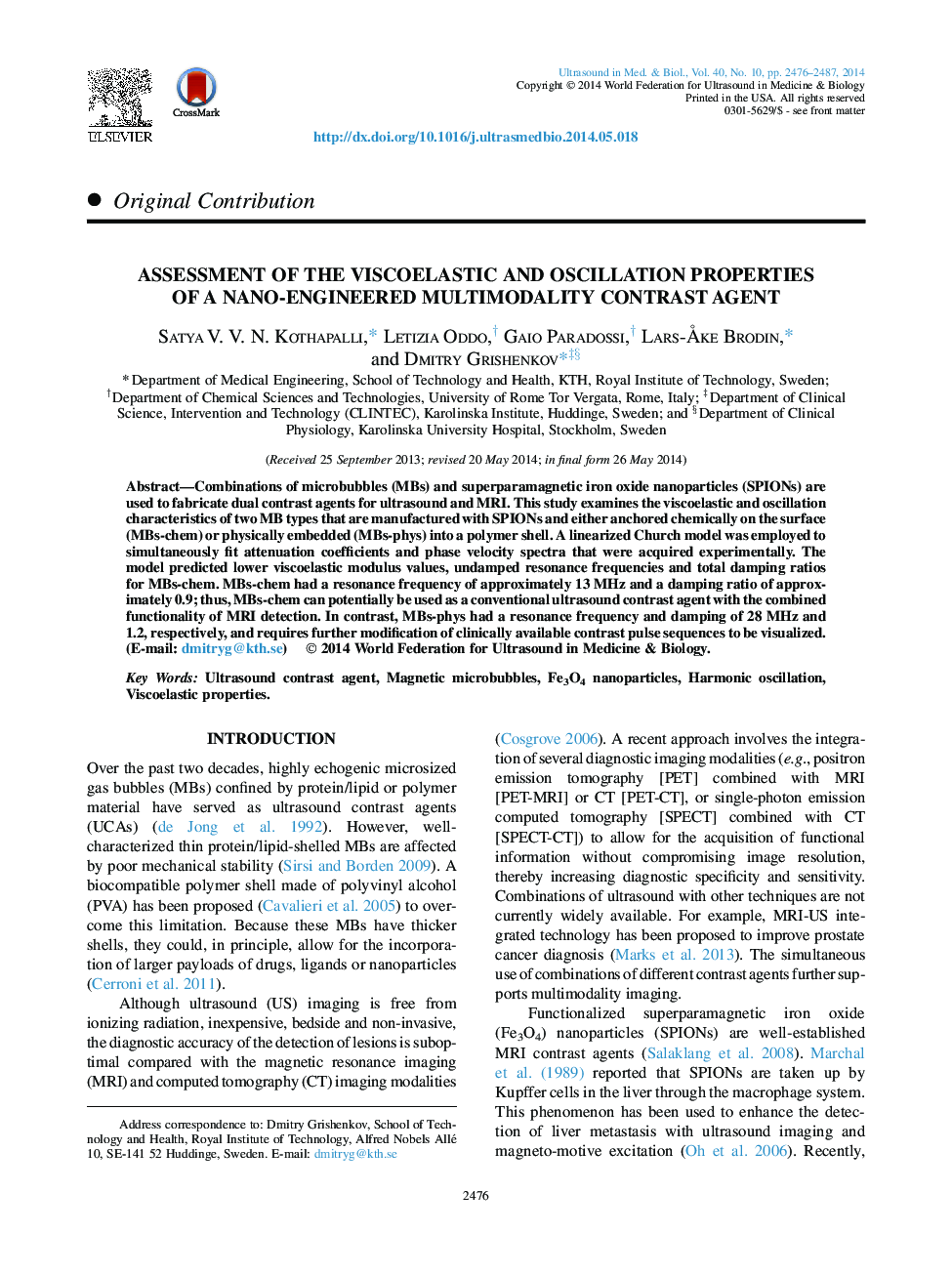| Article ID | Journal | Published Year | Pages | File Type |
|---|---|---|---|---|
| 10691574 | Ultrasound in Medicine & Biology | 2014 | 12 Pages |
Abstract
Combinations of microbubbles (MBs) and superparamagnetic iron oxide nanoparticles (SPIONs) are used to fabricate dual contrast agents for ultrasound and MRI. This study examines the viscoelastic and oscillation characteristics of two MB types that are manufactured with SPIONs and either anchored chemically on the surface (MBs-chem) or physically embedded (MBs-phys) into a polymer shell. A linearized Church model was employed to simultaneously fit attenuation coefficients and phase velocity spectra that were acquired experimentally. The model predicted lower viscoelastic modulus values, undamped resonance frequencies and total damping ratios for MBs-chem. MBs-chem had a resonance frequency of approximately 13 MHz and a damping ratio of approximately 0.9; thus, MBs-chem can potentially be used as a conventional ultrasound contrast agent with the combined functionality of MRI detection. In contrast, MBs-phys had a resonance frequency and damping of 28 MHz and 1.2, respectively, and requires further modification of clinically available contrast pulse sequences to be visualized.
Related Topics
Physical Sciences and Engineering
Physics and Astronomy
Acoustics and Ultrasonics
Authors
Satya V.V.N. Kothapalli, Letizia Oddo, Gaio Paradossi, Lars-Ã
ke Brodin, Dmitry Grishenkov,
